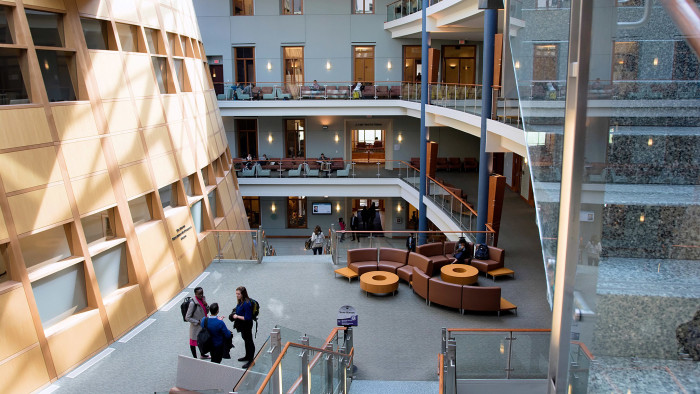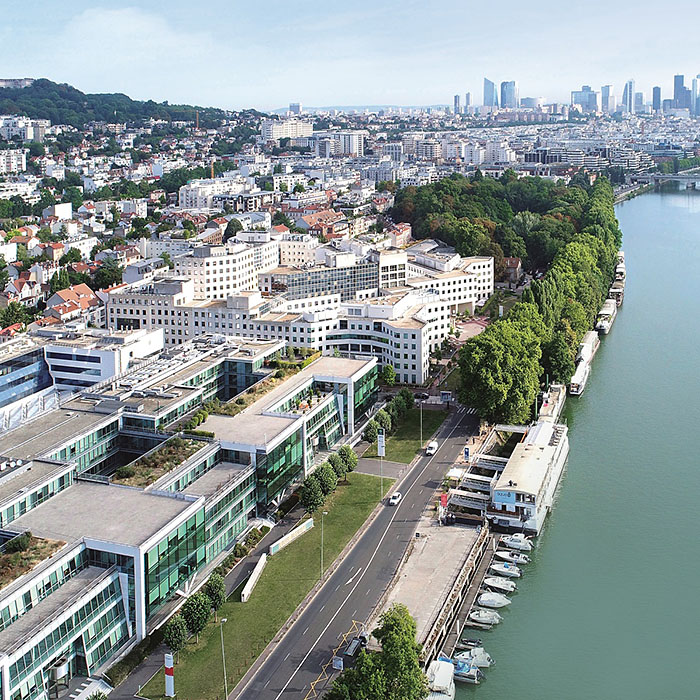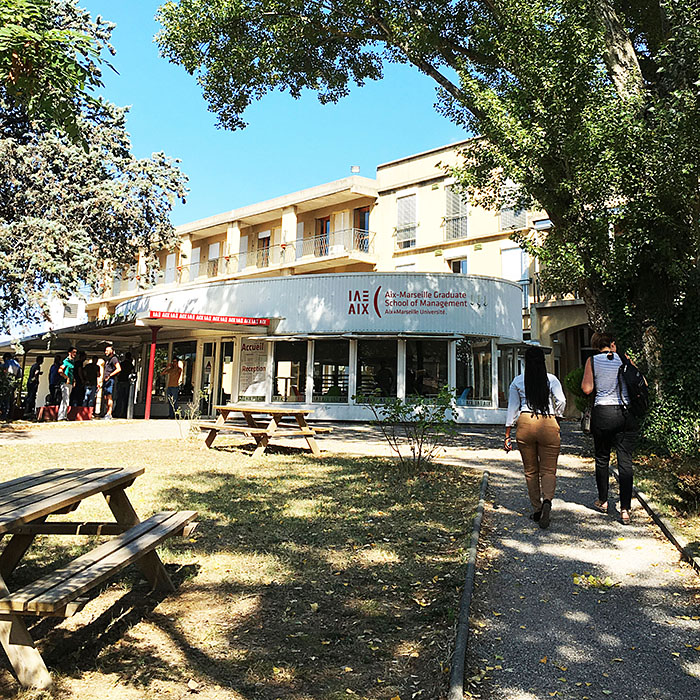FT Masters in Management Ranking 2019: analysis

Roula Khalaf, Editor of the FT, selects her favourite stories in this weekly newsletter.
The masters in management is a rare example of growing demand in today’s subdued global business education market. Applications to MiM programmes around the world rose almost 3 per cent last year, while MBA demand was flat, according to the Graduate Management Admission Council (GMAC).
Masters in management courses are also performing better than other specialist masters degrees, such as those focused purely on accountancy or finance. Demand for all specialist business masters degree programmes fell 0.3 per cent last year, according to GMAC, which administers the GMAT business school application exam.
Demand for MiM courses is strongest in Europe, the birthplace of the degree. The reverse is true in the US, where most people consider the MBA the default business masters qualification. Last year, GMAC reported that 66 per cent of European MiM courses saw an increase in applications. In the US, however, 71 per cent of courses reported a drop in demand.
“Master in management programmes have deep roots in Europe, where the legacy degree is sought after by European employers,” says Deborah Somers, GMAC’s regional director for Europe.
FT Masters in Management Ranking 2019

The table in full
Find out which business schools have made it to the top 100 in the 15th edition of the FT Masters in Management ranking. Also, learn how the table is compiled.
Separate GMAC research into hiring intentions found that 67 per cent of European employers surveyed intended to hire MiM talent in 2019, compared with 33 per cent in the US.
This is not deterring US schools from launching MiM programmes, which are seen as a way of filling the gap between students on undergraduate courses and those returning to higher education at the MBA level after several years of work. The number of US MiMs accepting GMAT exam scores — a good test of new course creation — nearly doubled from 102 to 195 between 2007 and 2016, according to the latest data provided by GMAC.
Georgetown University’s McDonough School of Business in Washington DC this year launched its first MiM, designing a curriculum with a focus on technology and innovation. The first cohort of 31 students started the 11-month programme in July.
Evelyn Williams, the course’s academic director, says the course was created because the school identified a need for students with bachelors degrees to learn the language of business in order to bridge the gap between school and the world of work.
“Just like Excel and basic computing skills were expected 15-20 years ago, now employers expect a minimal fluency in programming and data visualisation and analysis,” she says. “Hard-charging, academically motivated students don’t want to wait until their late twenties to gain these advanced business skills.”
In Europe, the popularity of the MiM is encouraging schools to add complementary programmes. Imperial College Business School in London already runs a highly ranked and very selective MiM, where only one in 10 applicants is offered a place on the course. However, this September it added an alternative programme — a masters in international management.
The target audience for this new qualification is those who already have a bachelors degree in a quantitative subject, such as economics or accountancy. The curriculum is structured so that there is less teaching in these areas, giving students leeway in their timetables to take more of the specialist subjects Imperial teaches, such as business analytics and leadership skills.
The challenge is to keep up with the changing expectations of students now coming of age for postgraduate qualifications such as the MiM. They want more international experiences and to learn new and emerging subjects, particularly data analytics and climate change issues, according to Leila Guerra, Imperial’s associate dean for postgraduate programmes.
While global demand for the MiM is increasing, three programmes in the US closed last year. “That was a wake-up call,” says Guerra. “Higher education needs to keep reinventing itself. We cannot take for granted that the model we have used in the past will still be working in the future.”
The cost and the return on investment are big factors in the growing popularity of MiMs, according to Andrew Crisp, co-founder of the education research business CarringtonCrisp. The business school brand is important, too. He points to London Business School’s MiM, which carries a tuition fee of £32,500 this year — about the same as an MBA offered by less widely known institutions. “That means you can get a great name on your CV to accelerate your career years before most MBA students would go to business school,” he says.
Crisp has also noticed a change in the aspirations of MiM students. An online survey by CarringtonCrisp of 1,041 young people aged 22 to 25 who had previously expressed an interest in business school found that big data was now more popular than accountancy or economics as a subject choice. But it also found that business ethics was cited as a preferred subject by close to a fifth of respondents, about as many as chose finance.
The interest in ethical issues may come in part from promotion of this subject area by the business schools themselves, which in turn are being encouraged to add such topics to their curriculums by companies, according to Crisp. The University of Birmingham in the UK this year opened the Lloyds Banking Group Centre for Responsible Business, whose mission is to help companies become more responsible and achieve sustainable development goals.
“There is a younger age group that is more attuned to these issues than people currently taking MBAs,” Crisp says. “But there is also a push from the providers of masters in management degrees saying they are offering this, and a push from business, which says we have a role to play in society.”
Top school: St Gallen

For the ninth year in a row the University of St Gallen tops the ranking with its MA in strategy and international management. Its formula for success has been consistent since 2017, in that its alumni have the largest weighted salaries three years after graduation ($111,015), report the joint top achievement of their professional aims (92 per cent) and have rated their careers service highest of all the participating schools.
New to top 20: Skema

Skema has entered the top 20 for the first time, rising from 25th to 12th. Much of its success is based on professional aims achieved by alumni, (89 per cent), ranking sixth in this category. The school also has the biggest rise in value for money over the past year, corresponding to a large increase in weighted average salary, up by $14,017 to $76,350. This is the second year running it has made gains of 10 places or more in the ranking.
Biggest riser: La Rochelle

In a return to form, La Rochelle rises 28 places this year to 66th in the ranking. Previously it had been held back by underperformance in the aims achieved and career improvement categories, which have now improved. A further significant boost came from the percentage of faculty with doctorates (up from 71 per cent to 89 per cent) and a more gender-balanced student cohort, with women making up 51 per cent of the intake, compared with 65 per cent last year.
Highest salary increase: Shanghai Jiao Tong: Antai

Shanghai Jiao Tong University: Antai has the highest salary increase, with graduates paid an average of 124 per cent more three years after graduation. Overall, the school rose four positions to joint 14th place. Antai also performs well in weighted average salary and value for money, although its result in the international course experience category (slipping from 63rd to 80th) has pulled down its overall performance this year.
Gender balance: IAE Aix-Marseille

IAE Aix-Marseille Graduate School of Management has the best gender balance for faculty, at 50 per cent, as well as being one of nine schools to have 50 per cent female students. The school rises 18 places to 33rd partly because of this. It also performs well on value for money, up seven places to 12th. IAE saw marked improvements for the international mobility of alumni, the students’ international course experience and the international make-up of board and faculty.
Top for international mobility: Smurfit

Smurfit Graduate Business School at University College Dublin retains its top ranking for international mobility (changes in country of employment in the three years after graduation) for a second year. International students also make up 90 per cent of the MiM cohort. Smurfit holds on to its overall seventh position in the MiM ranking from 2018. Graduates saw an average 65 per cent increase in salary. Most alumni were employed three months after graduation.
Top for international experience: IQS/FJU/USF

The masters in global entrepreneurial management programme is run by IQS School of Management in Spain, Fu Jen University in Taiwan and the University of San Francisco in the US. Ranked top for international course experience, the MiM is studied on three continents in one year, allowing students to pursue internships and build multinational professional networks. It rises 13 places from 2018 to 31st in the MiM ranking, with a salary increase of 64 per cent, but remains bottom of the table for value for money.
Comments